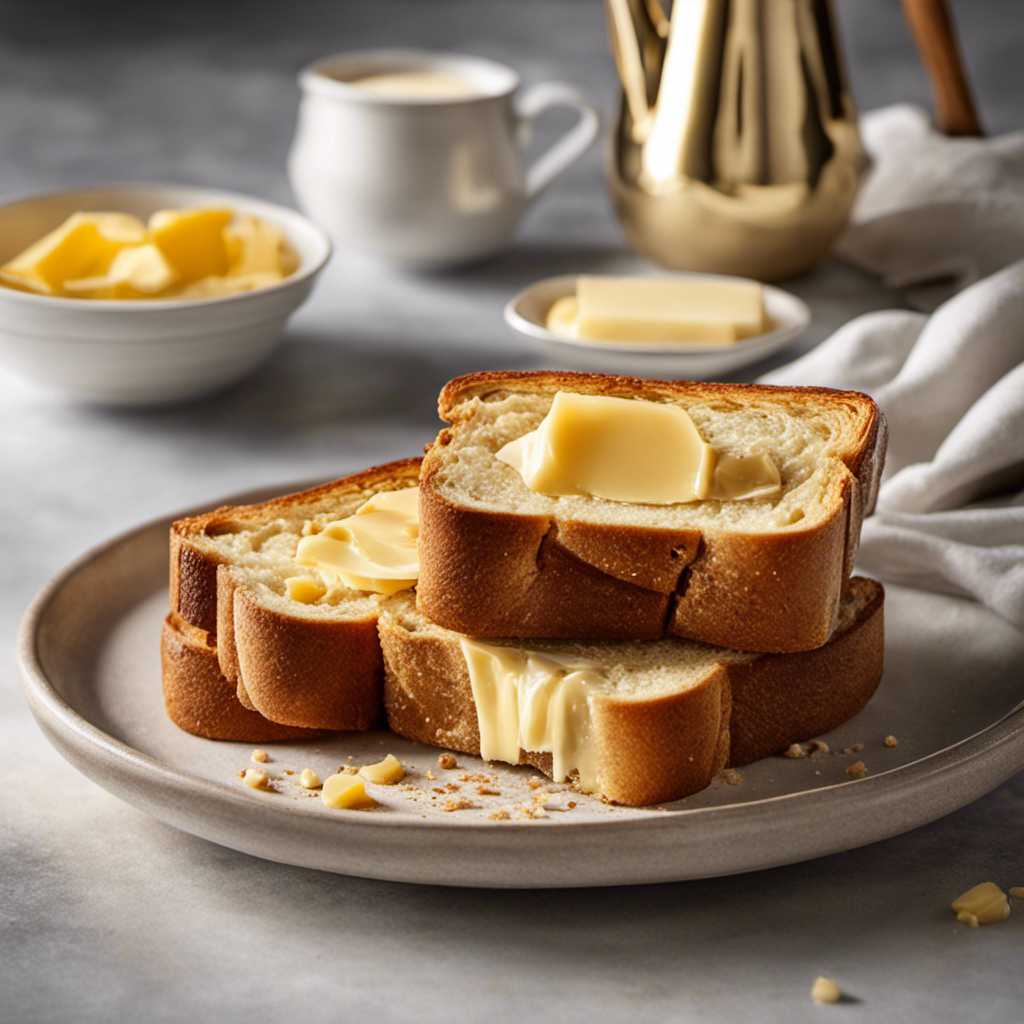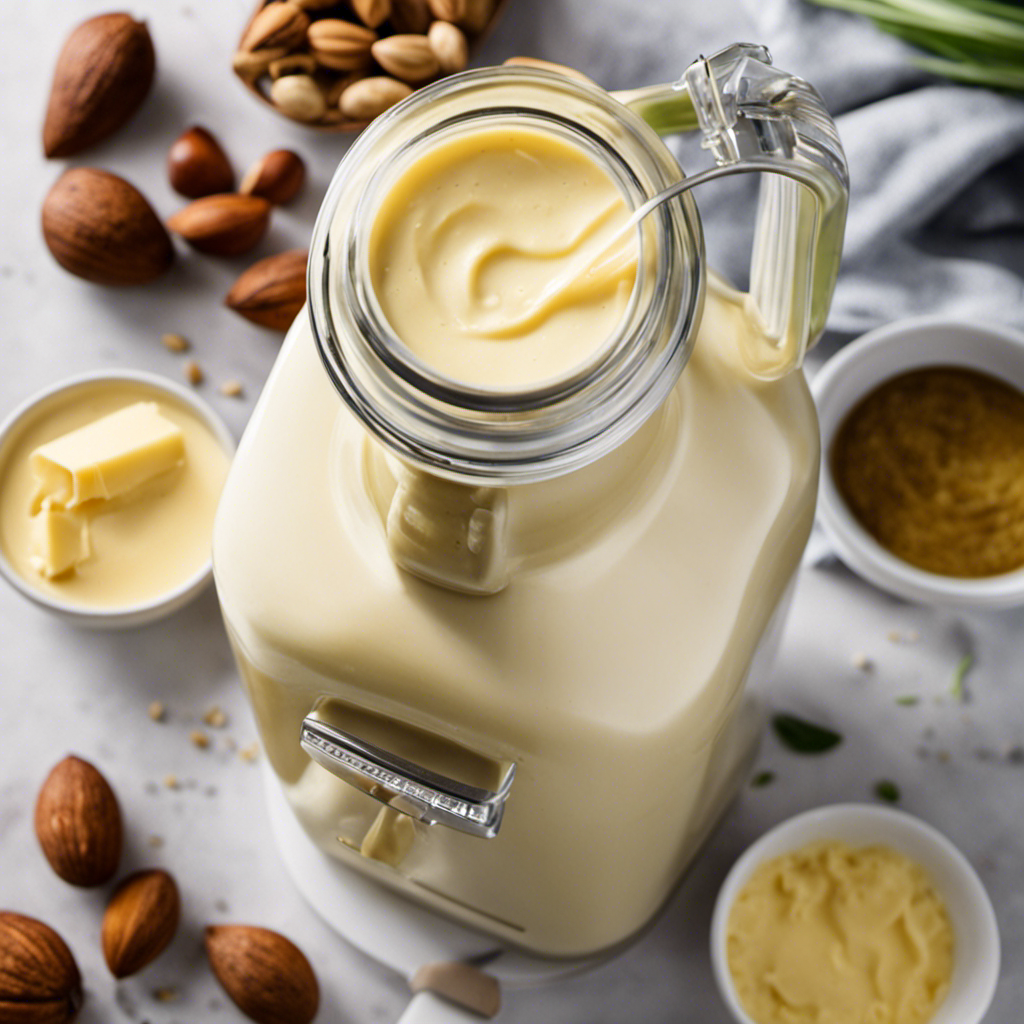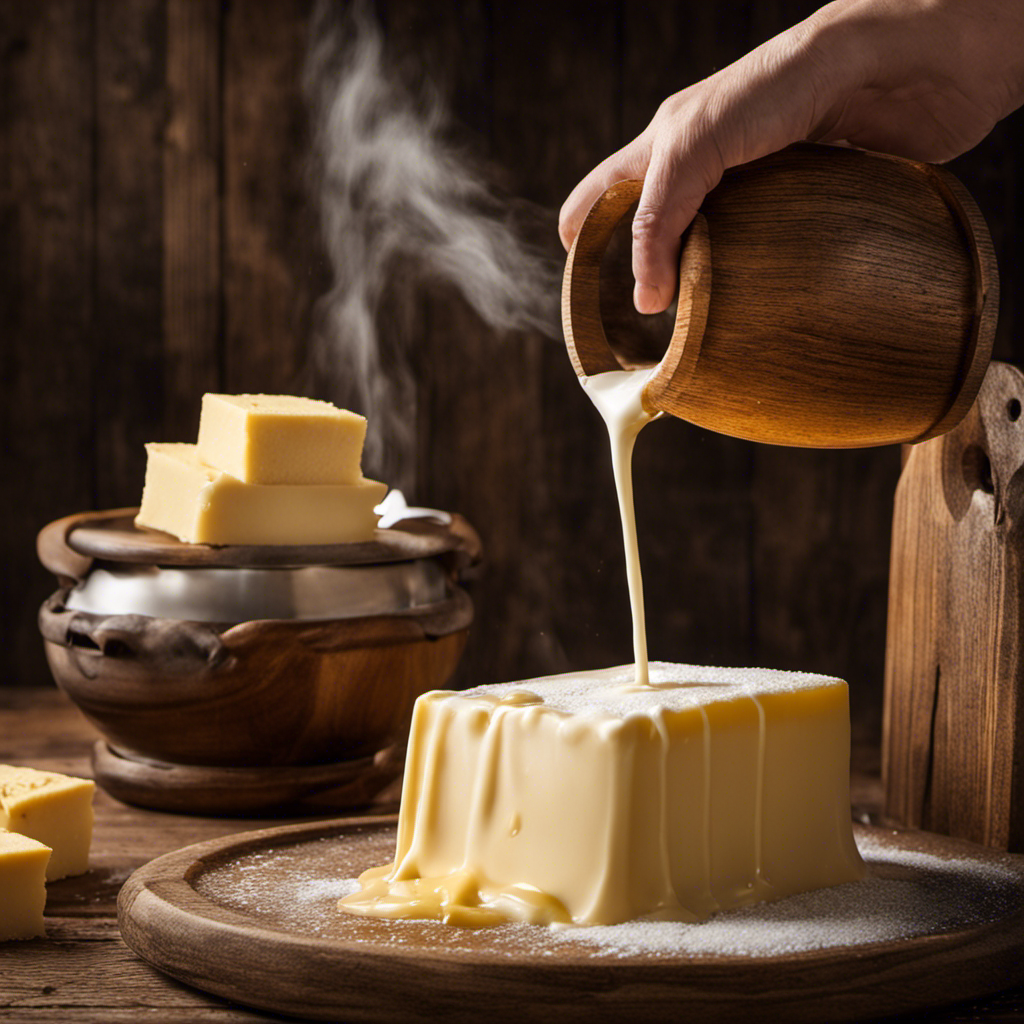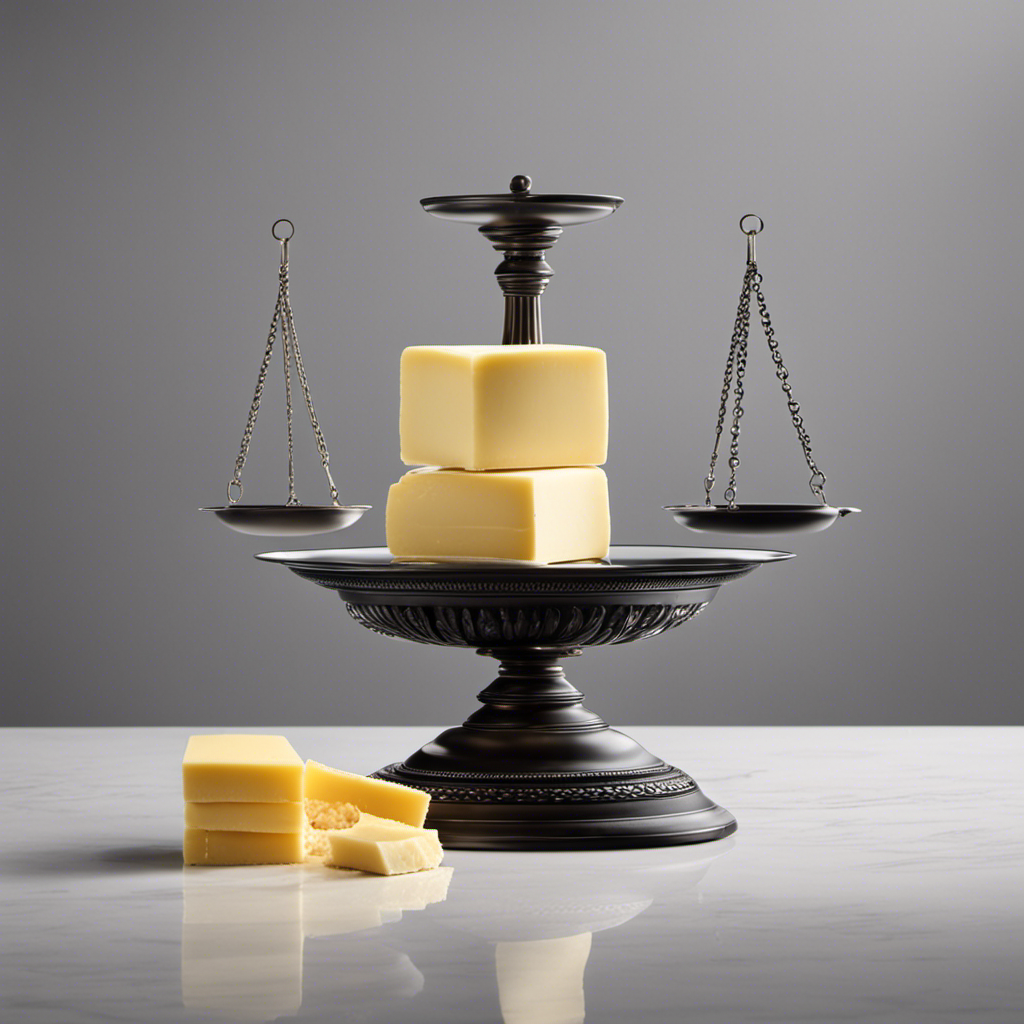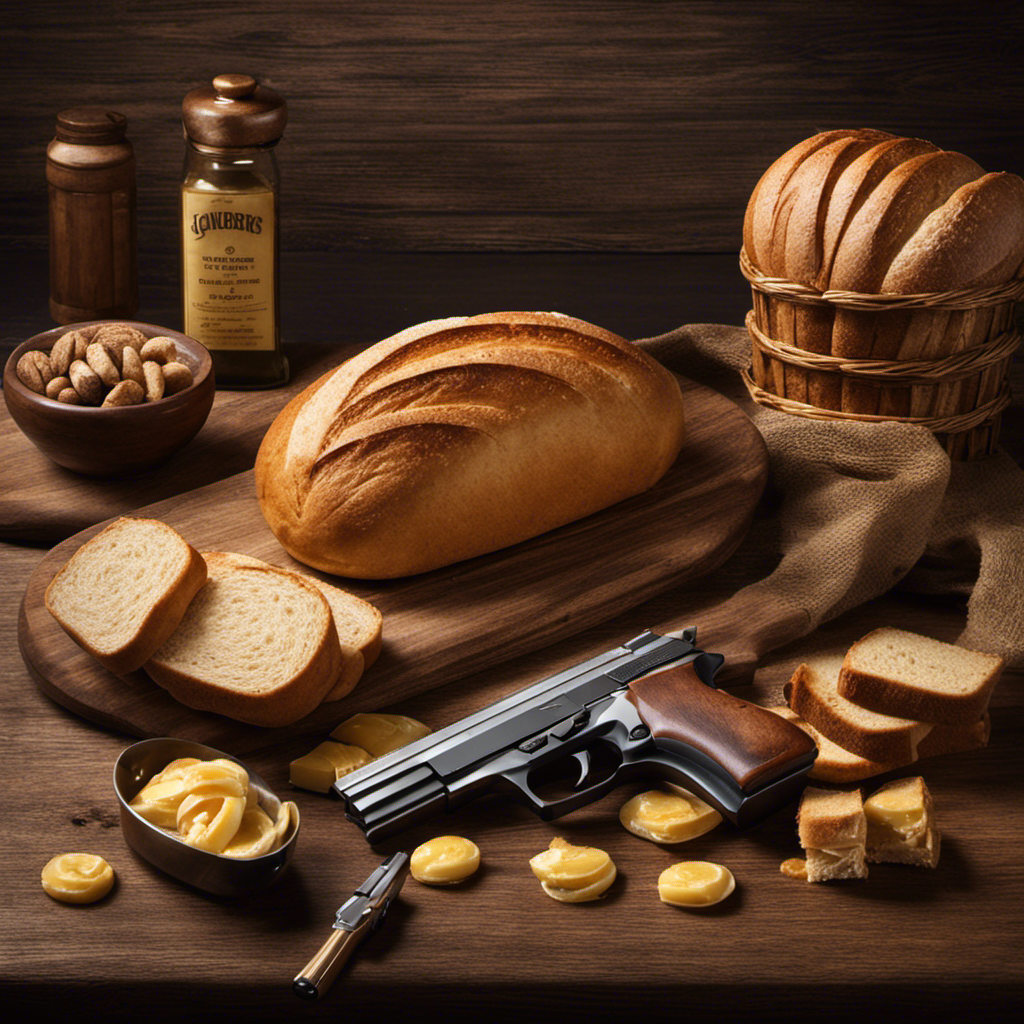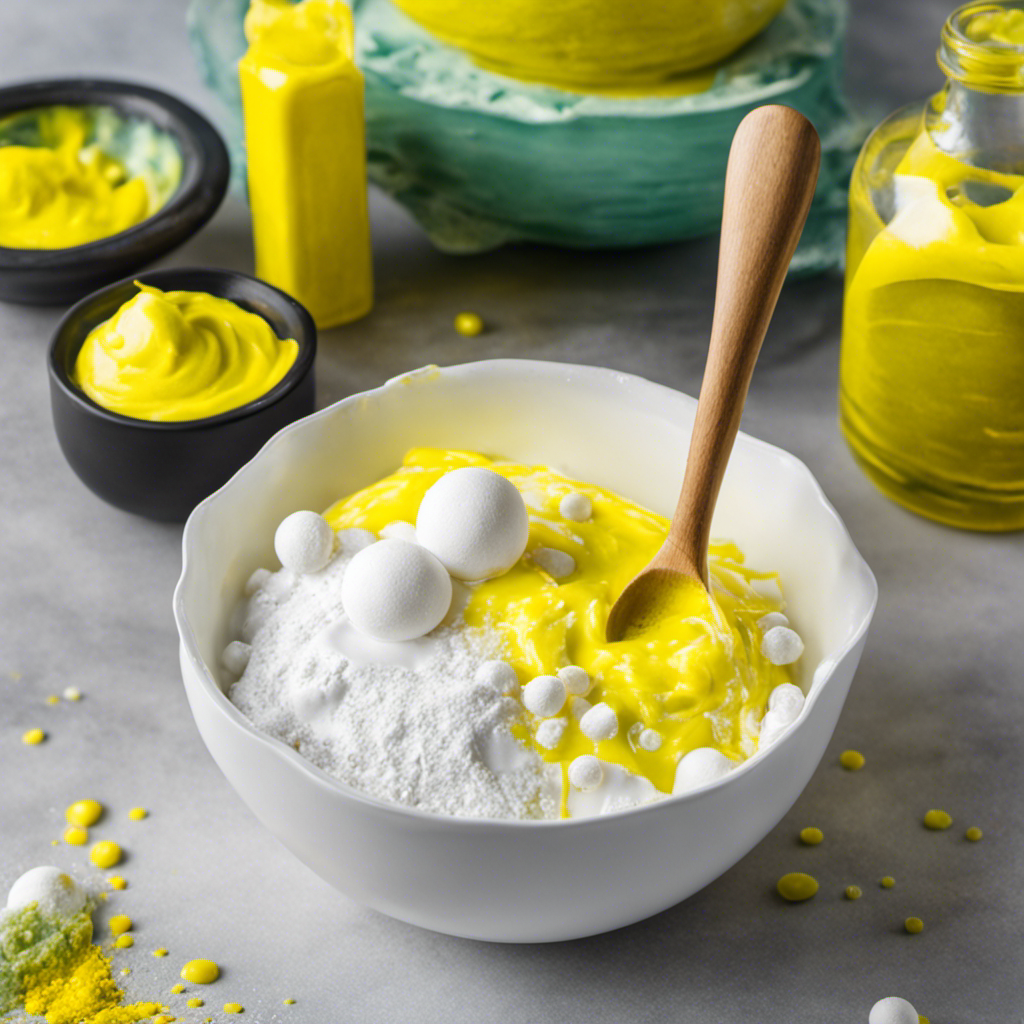I have found the ideal method for making toast with butter, and I am thrilled to share it with you!
In this article, I’ll guide you through the process step by step, ensuring that you achieve a deliciously golden and buttery slice every time.
We’ll start by selecting the ideal bread, then move on to preparing the butter just right.
Next, we’ll toast the bread to perfection and finish off with a smooth and even butter spread.
Optional pinch of salt? I’ll cover that too.
So let’s get started on this mouthwatering toast adventure!
Key Takeaways
- Choose whole grain or artisan bread for a hearty and flavorful toast.
- Soften butter at room temperature for easy spreading and use a butter dish to maintain consistent temperature.
- Explore alternative spreads like jam, avocado, or nut butter for different flavors and nutritional benefits.
- Adjust toaster settings for desired toast consistency and experiment with different toasting techniques.
Choosing the Right Bread
To make the perfect toast with butter, you’ll want to start by choosing the right bread.
When it comes to selecting bread, there are a few key factors to consider.
One option is choosing whole grain bread, which is packed with nutrients and fiber. Whole grain bread offers a hearty texture and a slightly nutty flavor that pairs well with butter.
Another option is selecting artisan bread, which is made with high-quality ingredients and often crafted by skilled bakers. Artisan breads come in a variety of flavors and textures, allowing you to experiment with different tastes and find the perfect match for your buttery toast.
Whether you choose whole grain or artisan bread, both options will elevate your toast to a whole new level of deliciousness.
Preparing the Butter
When it comes to preparing the butter for my toast, there are a few key points I like to consider.
First, I always make sure to have the butter at the right temperature for spreading – not too cold, but not too melted either.
Second, I often find myself debating between using salted or unsalted butter for my toast.
Lastly, if I’m feeling adventurous, I like to explore alternative spreads that can add a unique twist to my morning routine.
Butter Temperature for Spreading
Make sure your butter is at room temperature for easy spreading on your toast. Here are some tips for achieving the perfect butter consistency and mastering spreading techniques:
-
Soften the butter: Take the butter out of the refrigerator and let it sit at room temperature for about 30 minutes. This will allow it to soften, making it easier to spread.
-
Use a butter dish: Keep your butter in a covered butter dish on the counter. This will help maintain a consistent temperature and prevent it from getting too soft or melting.
-
Use a butter knife: When spreading butter on your toast, use a butter knife with a slightly rounded edge. This will help you spread the butter smoothly and evenly, without tearing the toast.
Salted Vs. Unsalted Butter
Did you know that choosing between salted and unsalted butter can greatly affect the flavor of your dishes? It’s true!
Not only do these two types of butter differ in taste, but they also have nutritional differences. Salted butter, as the name suggests, contains salt. This can add a savory and slightly salty flavor to your food.
On the other hand, unsalted butter is pure butter without any added salt. This allows the natural sweetness and richness of the butter to shine through. When it comes to baking, using unsalted butter gives you more control over the amount of salt in your recipe.
However, if you’re looking to enhance the flavor of savory dishes like pasta or roasted vegetables, salted butter can be a great choice.
Alternative Spreads for Toast
If you’re looking to switch up your breakfast routine, have you considered trying alternative spreads for your morning toast? Toast is the perfect canvas for a variety of delicious spreads that can take your breakfast to the next level. Here are three options to consider:
-
Sweet spreads for toast: From classic options like jam and honey to more unique choices like Nutella or cookie butter, sweet spreads add a burst of flavor to your morning toast. They can satisfy your sweet tooth and make your breakfast feel like a treat.
-
Savory spreads for toast: If you prefer a savory twist, try spreads like avocado, cream cheese, or hummus. These options provide a creamy and flavorful base for your toast, making it a satisfying and protein-packed breakfast.
-
Nut butter spreads for toast: Nut butters like peanut butter, almond butter, or cashew butter are not only delicious but also provide a good source of healthy fats and protein. They can be paired with sliced fruit or a drizzle of honey for an extra touch of sweetness.
Toasting the Bread
First, you’ll want to pop the bread slices into the toaster. Toasting bread may seem simple, but there are a few techniques to ensure the perfect toast every time.
Firstly, adjust the toaster settings according to your preference. For a light toast, set it to a lower heat, and for a darker, crispier toast, go for a higher setting. If you’re toasting a bagel or a thicker slice, use the bagel function or opt for a longer toasting time.
However, if you encounter common toasting problems like uneven browning or burnt edges, try flipping the bread halfway through or lowering the heat slightly. Remember, experimentation is key to finding your ideal toasting technique.
Spreading the Butter
When it comes to spreading the butter on my toast, I often find myself torn between using butter or margarine. I can never decide which one is better for me.
Another question that often arises is whether to use room temperature butter or melted butter. I have tried both methods and have found that each has its own advantages and disadvantages.
Lastly, there is the issue of how much butter to use. Should I spread a thin layer or slather it on generously? It all depends on personal preference and dietary considerations.
Butter or Margarine
To make your toast even more delicious, spread some butter on it instead of margarine. Butter has a rich and creamy taste that enhances the flavor of your toast. Not only does it taste great, but it also has a few health benefits.
Here are three reasons why you should choose butter over margarine:
-
Butter vs. Olive Oil: While olive oil is often considered a healthier option, butter has its own advantages. It contains important fat-soluble vitamins like A, D, E, and K, which are not found in olive oil. These vitamins play a crucial role in maintaining overall health.
-
Health Benefits of Butter: Butter is a good source of healthy fats that provide energy and support cell growth. It also contains conjugated linoleic acid (CLA), which has been linked to potential health benefits like reducing inflammation and improving heart health.
-
Taste and Texture: Butter adds a rich and creamy flavor to your toast that margarine simply cannot match. Its smooth texture spreads easily, making your toast even more enjoyable.
Room Temperature or Melted
For optimum flavor, spread room temperature butter on your toast instead of melted butter. There are several benefits of using room temperature butter. Firstly, it spreads more easily and evenly on the toast, ensuring that every bite is coated in delicious buttery goodness. Additionally, room temperature butter provides a smoother and creamier texture, making each bite more enjoyable.
On the other hand, using melted butter has its pros and cons. While it may be convenient and save time, melted butter can often make the toast soggy and greasy. It also tends to drip off the sides, making a mess. So, if you want the perfect slice of toast, stick with room temperature butter.
Now that we know which type of butter to use, let’s move on to how much to use.
How Much to Use?
Now that we’ve discussed whether to use room temperature or melted butter on toast, let’s talk about how much butter to use.
To achieve that perfect balance of flavor and moistness, here are three tips for spreading butter evenly on your toast:
-
Start with a thin layer: It’s tempting to slather on a thick layer of butter, but too much can overpower the taste of the toast. Begin by spreading a thin, even layer across the entire surface.
-
Use a butter knife: A butter knife has a wider blade, making it easier to spread the butter smoothly. Hold the knife at a slight angle and apply gentle pressure as you glide it over the toast.
-
Chill your toast: If you want to prevent the butter from melting too quickly, let your toast cool down for a minute or two before spreading the butter. This will help the butter stay in place and give you that perfect, even spread.
Adding a Pinch of Salt (Optional
If you want to enhance the flavor of your toast, go ahead and sprinkle a pinch of salt on top before adding the butter. It may seem like a small addition, but it can make a big difference in taste.
When it comes to choosing between salted and unsalted butter, it ultimately depends on your personal preference. Salted butter already contains salt, so if you choose to use it, you may not need to add any additional salt to your toast. On the other hand, unsalted butter allows you to have more control over the amount of salt you add.
Adding a pinch of salt to your toast not only enhances the buttery flavor, but it also helps to bring out the natural flavors of the bread. It adds a subtle savory element that can elevate your breakfast or snack to the next level.
So next time you make toast, don’t forget to sprinkle a pinch of salt for an extra burst of flavor.
Now, let’s move on to some serving suggestions that will take your toast to the next level.
Serving Suggestions
To elevate your toast to the next level, try experimenting with different toppings and spreads. Here are three serving suggestions to take your buttered toast to new heights:
-
Avocado and Tomato: Spread a generous layer of ripe avocado on your toast and top it off with juicy tomato slices. Sprinkle with a pinch of salt and pepper for an extra burst of flavor.
-
Nut Butter and Banana: Swap out regular butter for a creamy nut butter like almond or peanut. Slice up a ripe banana and arrange it on top of the nut butter. Drizzle with a touch of honey for a sweet and satisfying treat.
-
Smoked Salmon and Cream Cheese: Spread a thick layer of cream cheese on your toast and layer on some smoked salmon. Top with a squeeze of lemon juice and a sprinkle of fresh dill for a savory and refreshing combination.
Now that you have some delicious serving suggestions, let’s move on to some tips for perfectly toasted buttered bread.
Tips for Perfectly Toasted Buttered Bread
For a perfectly toasted slice of bread, you’ll want to adjust the toaster settings to your desired level of crispiness. Toasting techniques can vary depending on the type of bread you’re using.
For lighter breads like white or wheat, a medium setting will give you a nice golden brown color with a slightly crunchy texture. If you prefer a darker, more toasted flavor, setting the toaster to a higher level will do the trick.
When it comes to butter, storing it at room temperature is ideal for optimal spreading consistency. This allows the butter to soften without being too hard or too soft.
Now that you know the basics of toasting and buttering, let’s move on to exploring some delicious variations and additional toppings to take your toast to the next level.
Variations and Additional Toppings
Let’s explore some tasty variations and extra toppings to elevate your toast to new levels.
Here are three creative ideas to transform your ordinary buttered toast into a delicious and exciting treat:
-
Avocado Toast: Spread mashed avocado on your toast and top it with a sprinkle of sea salt and a drizzle of olive oil. For an extra kick, add some red pepper flakes or a squeeze of lemon juice. Avocado toast is not only delicious but also packed with healthy fats and nutrients.
-
Nut Butter and Banana: Spread your favorite nut butter, such as almond or peanut butter, on your toast. Slice a ripe banana and arrange the slices on top. For a touch of sweetness, drizzle some honey or sprinkle cinnamon. This combination of creamy nut butter and sweet bananas is a classic that never disappoints.
-
Caprese Toast: Slice some juicy tomatoes and fresh mozzarella cheese. Layer them on top of your toast and sprinkle with fresh basil leaves. Drizzle with balsamic glaze or a good quality balsamic vinegar. The combination of tangy tomatoes, creamy cheese, and aromatic basil will transport your taste buds to Italy.
These variations and extra toppings will take your toast from basic to extraordinary. Get creative and enjoy exploring the endless possibilities!
Frequently Asked Questions
How Do I Choose the Right Bread for Making Toast With Butter?
When choosing bread for toast, consider the type you prefer, like whole wheat or white. Look for a loaf that is fresh and sliced evenly. Toasting time may vary, so experiment until you find your perfect golden brown.
What Are Some Tips for Preparing the Butter Before Spreading It on the Toast?
When it comes to preparing butter for spreading on toast, there are a few key techniques to keep in mind. First, make sure the butter is at room temperature for easy spreading. Additionally, you can experiment with alternative spreads like jam or avocado for a different flavor experience.
How Long Should I Toast the Bread for the Perfect Level of Crispiness?
To achieve the perfect level of crispiness, I toast the bread for about 3 to 4 minutes. This allows the bread to become golden brown and crunchy. Experiment with different toasting techniques and consider trying alternative spreads for added flavor.
Can I Add Any Other Toppings or Spreads Along With the Butter?
Sure, you can definitely add other toppings or spreads along with the butter to enhance your toast. Get creative and try combinations like avocado and tomato, cream cheese and smoked salmon, or Nutella and banana. The possibilities are endless!
What Are Some Serving Suggestions for Toast With Butter?
I love exploring different serving options for toast with butter. From sweet to savory, the possibilities are endless! Whether it’s a sprinkle of cinnamon sugar or a dollop of avocado spread, flavor variations can take your toast to a whole new level.
Conclusion
In conclusion, making toast with butter is a simple yet satisfying way to start your day. By choosing the right bread and preparing the butter just right, you can create a deliciously golden and crispy toast.
Don’t forget to add a pinch of salt for that extra burst of flavor. Whether you enjoy it plain or with additional toppings, like jam or avocado, the possibilities are endless.
So, why not give it a try and experience the warm, buttery goodness that will melt in your mouth like a dream?
